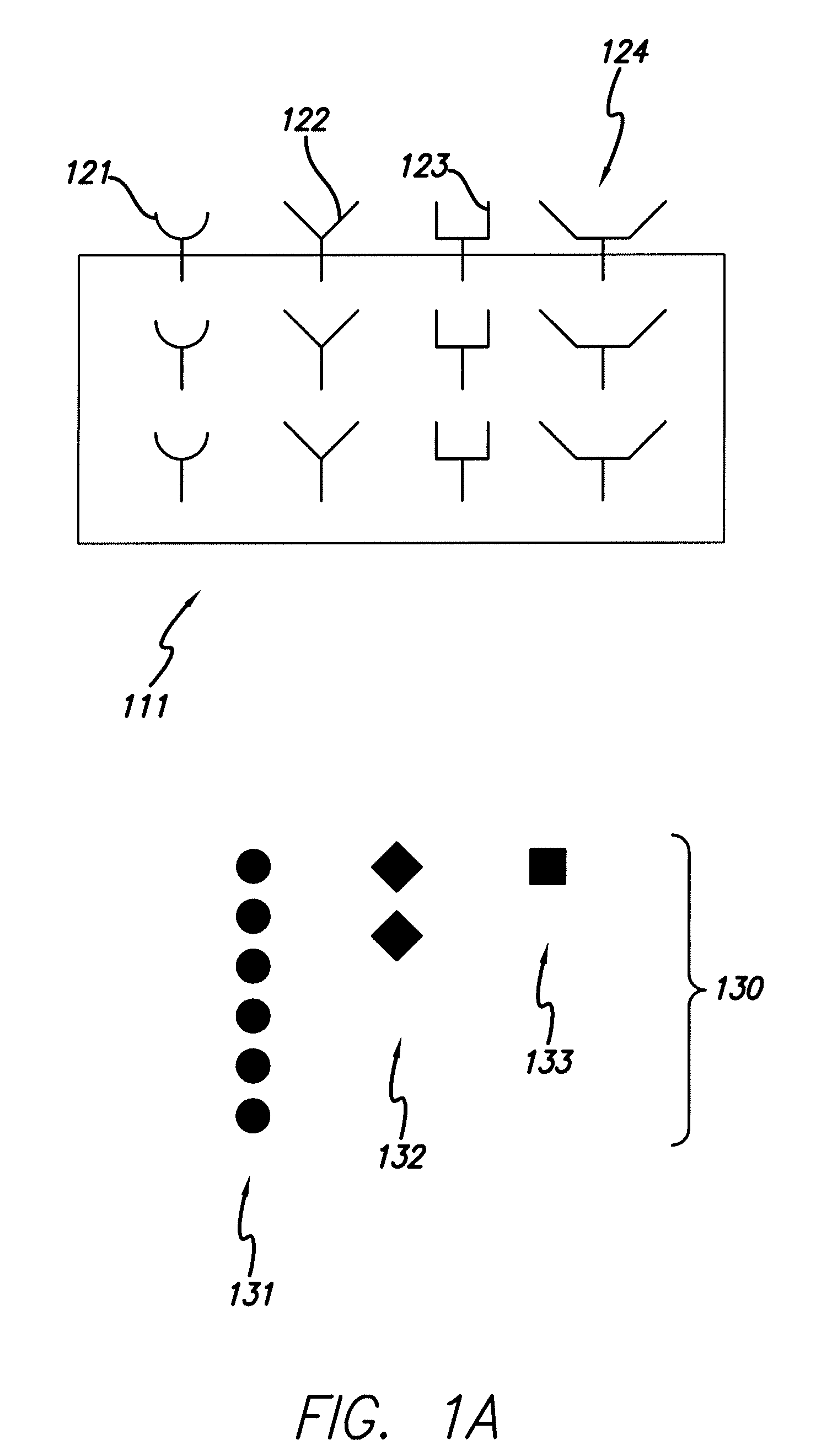Positive selection of serum proteins for proteomic analysis
a serum protein and proteomic analysis technology, applied in the field of proteomics, can solve the problems of time-consuming and expensive, limited scope, and difficulty in performing such tests
- Summary
- Abstract
- Description
- Claims
- Application Information
AI Technical Summary
Benefits of technology
Problems solved by technology
Method used
Image
Examples
example 1
[0068]Genomic DNA is digested by one or more restriction enzymes. The collectors are digested fragments of the genomic DNA. The fragments of genomic DNA are affixed to support media. One skilled in the art will appreciate that nucleic acids can be affixed, attached or immobilized to support media in a variety of ways. “Immobilized” as used herein refers to the association or binding between the nucleic acid sequences and the support medium that is sufficient to be stable under the conditions of binding, washing, analysis, and as necessitated by various embodiments of the present invention. The binding may be covalent or non-covalent. “Non-covalent” as used herein refers to one or more electrostatic, hydrophilic, or hydrophobic interactions. Further, “non-covalent” binding may also refer to the covalent attachment of a molecule, such as, streptavidin to the support medium and the non-covalent binding of the nucleic acids to the streptavidin. “Covalent binding” as used herein refers t...
example 2
[0071]With reference to FIG. 1, the collectors 121, 122, 123, 124 are affixed to the support media 111 and a sample 130 containing species of interest is provided. The sample 130 is placed in contact with the collectors 121, 122, 123, 124 (B). Selection of species of interest 131, representing a high abundance species, is limited because the collector set has a limited number of collectors that bind to species of interest 131. Thus, the influence that the high abundance species 131 may have on a mass spectra is “clipped,” i.e., limited such to allow better detection of low abundance species.
[0072]Partially filled collectors 122 and 123 indicate that species 132 and 133 are present at an intermediate concentration. The proportional binding of the species 132 and 133 to collectors 122 and 123 can be mapped to the particular concentration of species 132 and 133 in the sample. Completely empty collector 124 indicates that the species is not present in the sample at detectable levels.
[00...
PUM
| Property | Measurement | Unit |
|---|---|---|
| concentration | aaaaa | aaaaa |
| binding affinity | aaaaa | aaaaa |
| mass spectrometric analysis | aaaaa | aaaaa |
Abstract
Description
Claims
Application Information
 Login to View More
Login to View More - R&D
- Intellectual Property
- Life Sciences
- Materials
- Tech Scout
- Unparalleled Data Quality
- Higher Quality Content
- 60% Fewer Hallucinations
Browse by: Latest US Patents, China's latest patents, Technical Efficacy Thesaurus, Application Domain, Technology Topic, Popular Technical Reports.
© 2025 PatSnap. All rights reserved.Legal|Privacy policy|Modern Slavery Act Transparency Statement|Sitemap|About US| Contact US: help@patsnap.com



